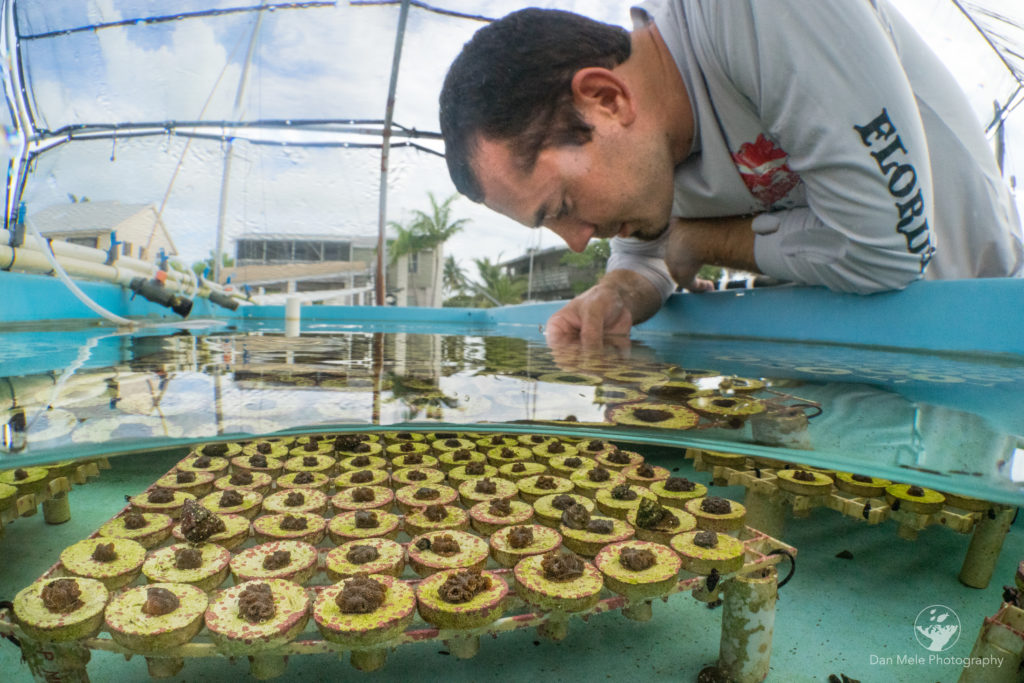Conservation and Biodiversity
Corals are in trouble — but we can help
June 8, 2020
Dan Mele is a research assistant at the University of the Virgin Islands. Dan’s research focuses on developing cost-effective techniques in coral restoration that are scalable to the wider Caribbean region.
Picture yourself in nature.
Did you see yourself in the forest or on top of a mountain? What about the ocean? Oceans are by far the greatest expanse of wilderness on the planet, with over 228,000 described species and an estimated 1–2 million still undescribed.
Approximately 25% of species found in the ocean depend on coral reefs at some point in their life cycle, making coral reefs the epicenter of ocean biodiversity. These high levels of biodiversity provide many benefits (“ecosystem services”) to the more than 500 million people that directly rely on coral reefs for their livelihood.
Coral reefs provide shoreline protection, eco-tourism, fisheries and medical advancements, as well as many other environmental benefits. These ecosystem services, however, are threatened by the ongoing degradation of coral reefs worldwide.
The two biggest stressors to corals — and sunscreen isn’t one of them
While sunscreen is harmful, coral bleaching and disease are the two most deadly stressors to coral reefs. Globally, climate change has warmed oceans, causing coral bleaching and widespread coral die offs. Caribbean reefs have experienced the brunt of bleaching events, while showing the least signs of recovery.
In addition to bleaching, disease has harmed nearly every species of coral in the Caribbean, with some species losing 97% of their population. Currently, many regions in the Caribbean are battling the spread of Stony Coral Tissue Loss Disease, which affects at least 22 species of coral. Despite these threats, widespread efforts are assembling to restore damaged coral reefs.

Coral nurseries and coral sex
In the last decade, coral gardening in field– and land-based nurseries has become a leading coral-restoration technique. Through coral fragmentation, restoration efforts can rapidly increase the amount of living coral in their nurseries.
Other techniques involving sexual propagation are becoming increasingly sought after, as these methods can increase the genetic diversity among a given species. Increased fertilization rates can create new genotypes better suited to deal with climate change, a process known as “assisted evolution.”
Can coral restoration prevail over climate change?
The United Nations’ decade of ecosystem restoration from 2021–2030, creates long-term goals to revitalize vanishing ecosystems, including coral reefs. Coral Restoration Foundation, Mote Marine Laboratory and Fragments of Hope have already seen long-term success at many of their outplanting locations.
Though not an end-all solution, coral restoration provides many benefits. Restoration allows us to preserve the genetic material or corals and propagate them in nurseries. Restoration also keep species from going extinct by advancing sexual propagation techniques. By targeting specific locations, restoration has the potential to rebuild reef structure for the persistence of reef health.
Additionally, coral restoration has peaked the public’s interest. Many citizen science programs have been an integral component to the success of coral restoration work.
But in a rapidly warming environment, it’s unlikely that restoration efforts alone can save coral reefs.Supporting and volunteering with coral restoration efforts will put the power back in the hands of communities to be stewards of their natural resources.
Learn more at Earth Day Network’s Conservation and Biodiversity campaign.
Photo at top: In Belize, Fragments of Hope has restoration sites with over 10 year survival of coral outplants. Here, Elkhorn Coral (Acropora palmata) and Staghorn Coral (Acropora cervicornis) grow in high density among each other, a site rarely seen in the Caribbean. Photo credit: Dan Mele
